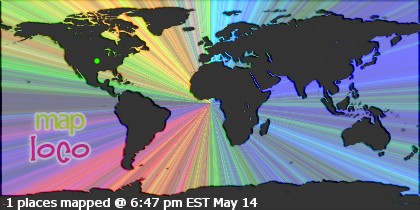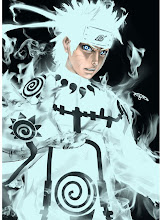4. CHARACTERISTICS
- Genres
Anime has many genres typically found in any mass media form. Such genres include action, adventure, children's stories, comedy, drama, erotica (hentai), medieval fantasy, occult/horror, romance, and science fiction.
Most anime includes content from several different genres, as well as a variety of thematic elements. Thus, some series may be categorized under multiple genres. A show may have a seemingly simple surface plot, but at the same time may feature a far more complex, deeper storyline and character development. It is not uncommon for an action themed anime to also involve humor, romance, and even social commentary. The same can be applied to a romance themed anime in that it may involve an action element, or in some cases brutal violence. Like the genres, no two characters are ever the same.
The following is a list of the major genres and designations that are specific to anime and manga.
For other possible genres, see film genre.
- Bishōjo: Japanese for 'beautiful girl', blanket term that can be used to describe any anime that features pretty girl characters, for example Magic Knight Rayearth.
- Bishōnen: Japanese for 'beautiful boy' blanket term that can be used to describe any anime that features "pretty" and elegant boys and men, for example Fushigi Yūgi or most CLAMP shows.
- Ecchi: Derived from the pronunciation of the letter 'H', Japanese for 'indecent sexuality' (although its origin not well known, even in Japan. Someone says it's because it's the previous letter to 'I', which is a homophone of 'love' in Japanese. It happens to be the first letter of the word 'Hentai' too but the relationship here is rather doubtful).Contains mild sexual humor, and some fan service, for example Love Hina or He Is My Master.
- Harem: Is a genre where several girl characters are attracted to a single, or sometimes multiple, boy characters. It is more often than not a Shonen and may be considered a sub-genre. Examples: Ranma 1/2
- Hentai: Japanese for 'abnormal' or 'perverted', and used by Western Audiences to refer to pornographic anime or erotica. However, in Japan the term used to refer to the same material is typically Poruno or Ero, for example: La Blue Girl.
- Kodomo: Japanese for 'child', this is anime or manga that is aimed at young children, for example Doraemon, Hello Kitty, Keroppi, or Panda-Z.
- Robot/Mecha: Anime or manga featuring super robots, for example Mobile Suit Gundam. The first of these super robots was Mazinger Z
- Moe: Anime or manga featuring characters that are extremely perky or cute, for example A Little Snow Fairy Sugar.
- Progressive: "Art films" or extremely stylized anime, for example Voices of a Distant Star or Byōsoku 5 Centimetre.
- Seinen: Anime or manga targeted at teenage or young male adults, for example Oh My Goddess!, Outlaw Star or Cowboy Bebop.
- Sentai: Literally "fighting team" in Japanese, refers to any show that involves a superhero team, for example Cyborg 009.
- Shōjo: Japanese for 'young lady' or 'little girl', refers to anime or manga targeted at girls, for example Fruits Basket or Mermaid Melody Pichi Pichi Pitch
- Mahō shōjo: Subgenre of shōjo known for 'Magical Girl' stories, for example Sailor Moon.
- Shōnen: Japanese for 'boys', Shōnen is like Seinen, but refers to anime or manga targeted at younger boys, for example Dragon Ball Z or Naruto .
- Mahō shōnen: Male equivalent of Mahō Shōjo, for example DNAngel.
- Shōjo-ai/Yuri: Japanese for 'girl-love', refers to anime or manga that focus on love and romance between female characters, for example Revolutionary Girl Utena or Kannazuki no Miko. It is often being replaced by the term "Girls Love" (GL). Yuri is more intimate girl love than that of Shōjo-ai, often sexual.
- Shōnen-ai/Yaoi: Japanese for 'boy-love', refers to anime or manga that focus on love and romance between male characters. The term "Shōnen-ai" is being phased out in Japan due to its other meaning of pederasty, and is being replaced by the term "Boys Love" (BL). An example of this style is Loveless. Yaoi is more intimate than that of Shōnen-ai, often sexual.
Some anime titles are written for a very specific audience, even narrower than those described above. For example, Initial D, Wangan Midnight and éX-Driver concern street racing and car tuning. Ashita No Joe, Hajime no Ippo were about boxing. Hanaukyo Maid Team is based on the French maid fantasy.
- Style
While different titles and different artists have their own artistic styles, many stylistic elements have become so common such that they are described as being definitive of anime in general. These elements have been given names of their own. The anime drawing style can be learned, particularly with the aid of books such as How to Draw Manga. Such books come complete with information and instructions on the styles used in anime.
A common approach is the large eyes style drawn on many anime characters, credited to the influence of Osamu Tezuka, who was inspired by the exaggerated features of American cartoon characters such as Betty Boop and Mickey Mouse and from Disney's Bambi. Tezuka found that large eyes style allowed his characters to show emotions distinctly. Cultural anthropologist Matt Thorn argues that Japanese animators and audiences do not perceive such stylized eyes as inherently more or less foreign.[1] When Tezuka began drawing Ribbon no Kishi, the first manga specifically targeted at young girls, Tezuka further exaggerated the size of the characters' eyes. Indeed, through Ribbon no Kishi, Tezuka set a stylistic template that later shōjo artists tended to follow. Another variation of this style is "chibi" or "super deformed"; which usually feature huge eyes, an enlarged head, and small body.
Other stylistic elements are common as well; often in comedic anime, characters that are shocked or surprised will perform a "face fault", in which they display an extremely exaggerated expression. Angry characters may exhibit a "vein" or "stressmark" effect, where lines representing bulging veins will appear on their forehead. Angry women will sometimes summon a mallet from nowhere and strike someone with it, leading to the concept of Hammerspace and cartoon physics. Male characters will develop a bloody nose around their female love interests (typically to indicate arousal, based on an old wives' tale).[8] Embarrassed characters will invariably produce a massive sweat-drop, which has become one of the most widely recognized stereotype motifs of anime.
The degree of stylization varies from title to title. Some titles make extensive use of common stylization: FLCL, for example, is known for its wild, exaggerated stylization. In contrast, titles such as Only Yesterday, a film by Isao Takahata, take a much more realistic approach, and feature few stylistic exaggerations.




![[Cracked Application] YouToob 6.9 / Spk Youtube Bot](http://ajulinc.org/wp-content/uploads/2011/09/9-13-2011-12-31-51-AM2.png)





